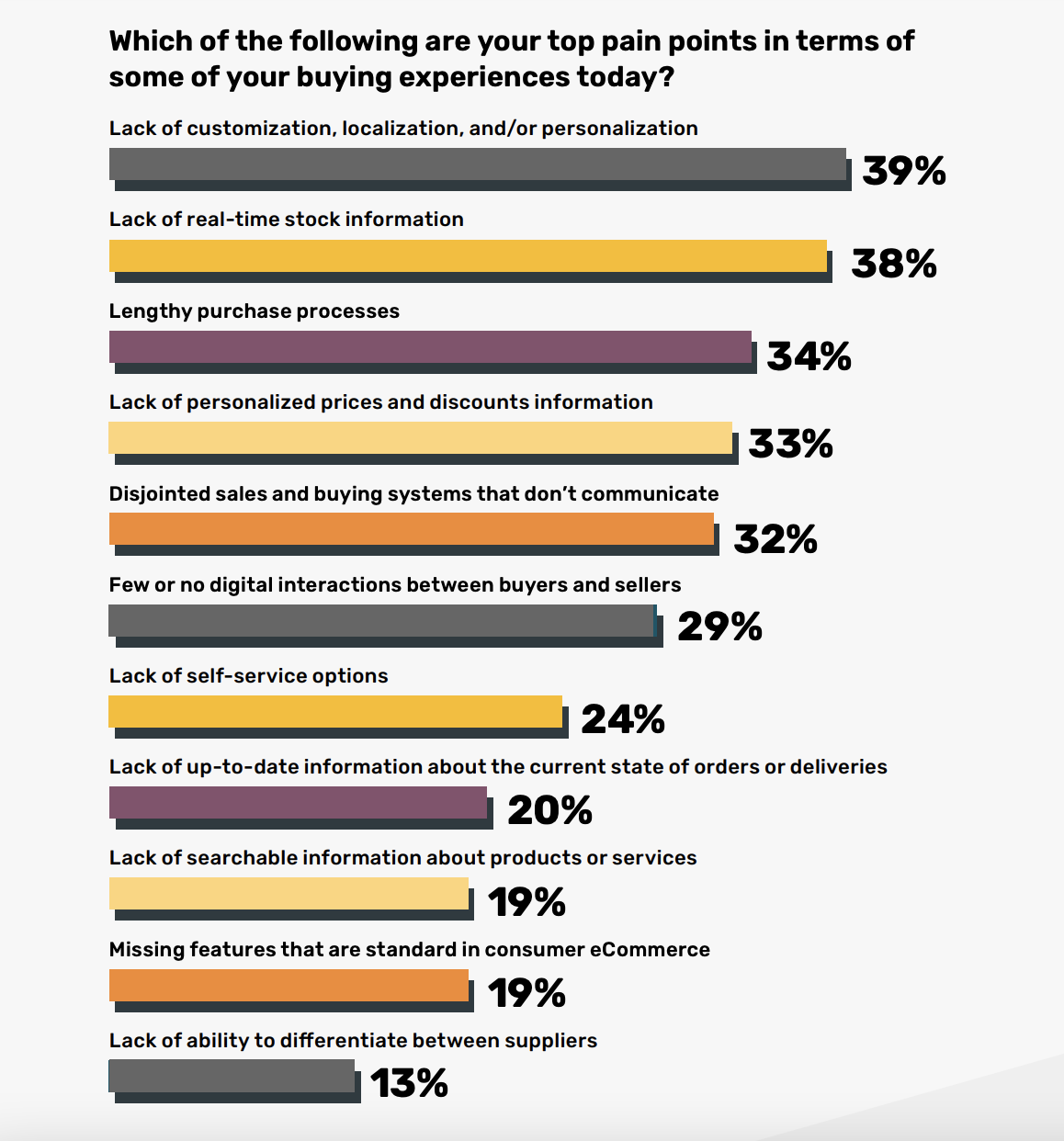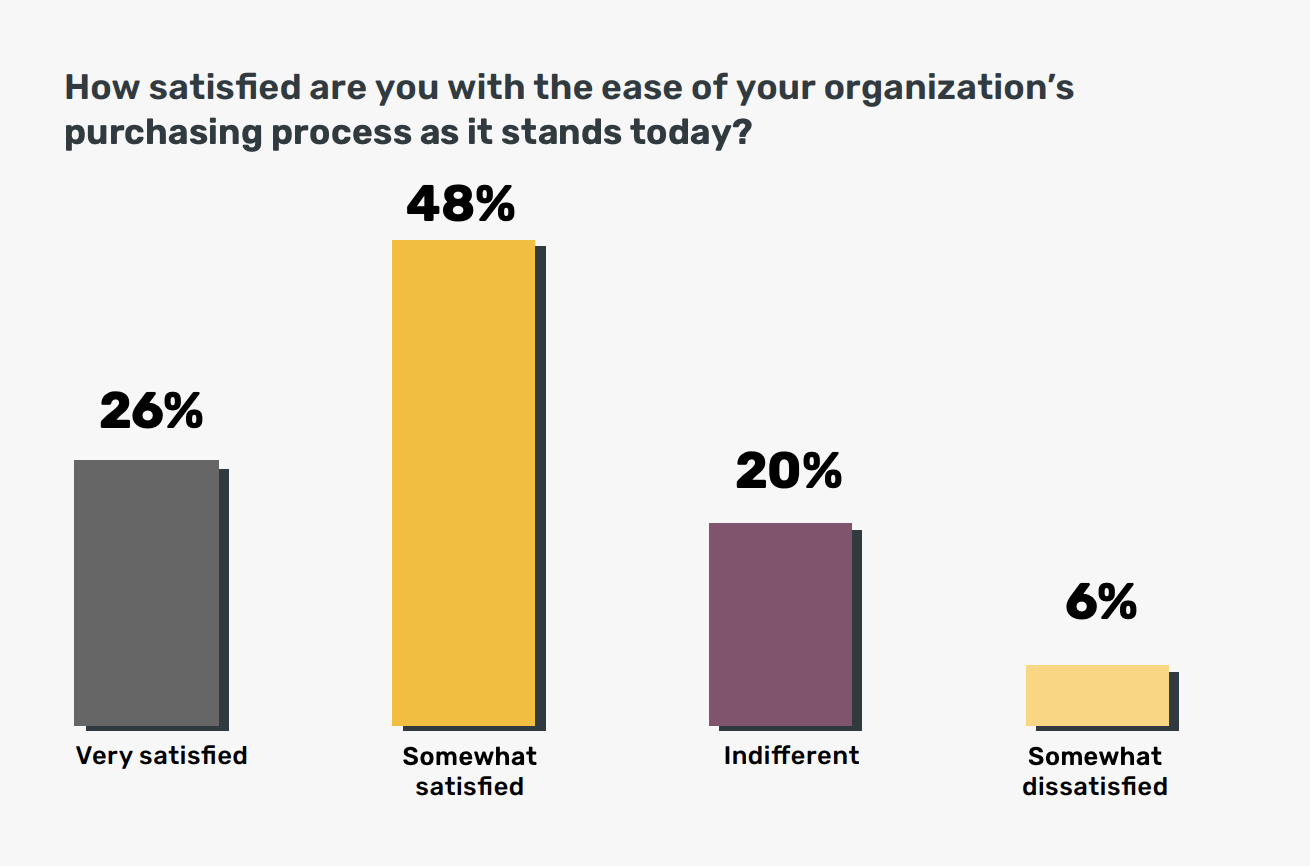It’s time to bring consumer-grade innovation into the world of B2B ecommerce.

Source: Pexels
It’s tempting to think of B2B buyers as qualitatively different creatures than ordinary consumers, but the reality is that B2B procurement teams are made up of regular folks who are also consumers in their own right. Every B2B buyer, in other words, is also a B2C buyer who’s used to doing their own shopping using consumer-facing platforms such as Amazon or Walmart.com.
Why does that matter? It’s important because it means every B2B buyer is used to the simplicity and convenience of Amazon-style consumer ecommerce — and they want to see the same features and services replicated in their professional purchasing, too. As the B2B marketplace becomes increasingly digital — by 2025, four-fifths of B2B sales are likely to be conducted online — this desire for intuitive user interfaces and real-time updates is only going to grow.
For suppliers that are wary of change, this presents a problem. But for B2B sellers willing to embrace new technologies and ways of doing business, the digital revolution is a massive opportunity — if they can align their online offerings with the increasingly sophisticated requirements of today’s B2B buyers. So what exactly do B2B buyers want? Here are 4 key things that today’s B2B ecommerce solutions need to offer:
A unified platform
According to McKinsey, B2B businesses view digital interactions as up to three times more important to their customers than traditional face-to-face or over-the-phone sales encounters. That chimes with another recent piece of research, which suggests that two-thirds of B2B buyers would prefer to conduct the purchasing process digitally, rather than in person or over the phone.
This doesn’t mean B2B buyers are wholly happy with current digital sales offerings, however. There remains a significant issue around fragmentation, with different sales teams using different selling platforms, some of which are dated legacy systems that struggle to integrate with customers’ in-house purchasing software. Having to navigate this mismatched medley of sales solutions can be a slow and cumbersome experience for buyers, particularly if there’s a degree of manual input required.
What B2B procurement teams really want is a single, intuitively designed digital space where all their deals can take place. Not only can this speed up the purchasing process — and thus increase productivity — but it also enables buyers to better manage their spending by providing a consolidated view of all relevant transactions.
Powerful mobile tools
What’s better than a silky smooth commerce platform that can manage all of a B2B buyer’s purchases in one place? A silky smooth commerce platform that puts all the tools a B2B buyer needs to manage their purchases right in the palm of their hand.
Today, more than two-thirds of procurement leaders make the majority of their purchases on mobile devices. While this trend predates the pandemic, the sudden shift to remote working has further heightened B2B buyers’ desire for tools that enable them to operate effectively wherever they are. Sales platforms designed with mobile users in mind can facilitate this sort of flexibility, as well as ticking another important box for commercial buyers: good communication.

When asked what they want from their suppliers, B2B buyers almost always say a high level of responsiveness is important. In today’s fast moving business arena, when issues can crop up with little warning, real-time messaging services embedded directly into mobile sales platforms can give teams the connectivity they need to succeed.
A personalized experience
When asked what hampers a positive buying experience, poor levels of customization come out on top among B2B buyers, with 39% saying they’re frustrated at a lack of personalized features.

All too often, in fact, B2B procurement platforms lack any real customization or personalization. A supplier might implement a system that fails to take into account a low-cost, high-volume retailer’s tight margins, for instance, offering very little visibility around cost savings for bulk orders. A business like this needs a buying platform that can contextualize its unique purchasing position, making it easier for buyers to broker discounts and manage their spending.
The best B2B ecommerce platforms aren’t one-size-fits-all software tools — they’re flexible enough to adapt to and serve the needs of different industries and different customers, whether by creating industry-specific storefronts or by working with sales agents to implement the specific features and functionalities that a given customer needs.
Convenience and efficiency
Another common problem is linked to the world’s ongoing supply chain turmoil. With geo-political turbulence and the consequences of COVID-19 still hindering the global flow of goods, B2B buyers are finding it hard to obtain a wide selection of products and parts.
Against this backdrop, it can be hugely frustrating when a purchasing system doesn’t offer real-time stock updates, making it difficult for businesses to make informed and timely procurement decisions. Perhaps it’s not surprising, then, that three-quarters of B2B buying and procurement staff are at best “somewhat satisfied” with their company’s current purchasing set-up, according to a recent survey, with more than a quarter saying that they’re either indifferent or dissatisfied.

Digital platforms can help to overcome these pain points and realize new efficiencies across the value-chain. With clear visibility into part availability, shipping times, and other critical information, B2B buyers can forge more resilient supply chains for their businesses, mitigate against disruption, and adapt more quickly when things go wrong.
Now’s the time
Taken in aggregate, these points show that there’s an opportunity for suppliers that are willing to listen to — and act on — what B2B buyers want. The key is to realize that there’s more to providing a superlative purchasing experience than simply going digital: to drive success, B2B sellers need to commit to delivering digital sales capabilities that align with their customers’ needs and preferences.
Suppliers must ensure they have the technology to provide a bespoke, customizable buying experience to all their clients, regardless of which vertical they represent. Mobile functionality, real-time stock levels, order updates, and continuous support can all make an enormous difference to the customer experience, and help suppliers to build stronger relationships with customers who are used to the convenience and efficiency of B2C digital commerce.
B2B buyers that fail to make these changes will encounter more and more difficulties moving forward. But with the right technology, a better way of doing B2B business is possible. Now is the time to embrace it.




It’s true that too often, B2B customers are being treated as if they weren’t influenced by the same drivers as B2C customers, because they represent entities. At the end of the day, each segmentation has to be properly thought of, in order to have a proper marketing strategy applied. This is true even more so when it comes to B2B customers, as they often provide bigger financial potential. There needs to be a more in depth research in the digital options presented for these type of customers.